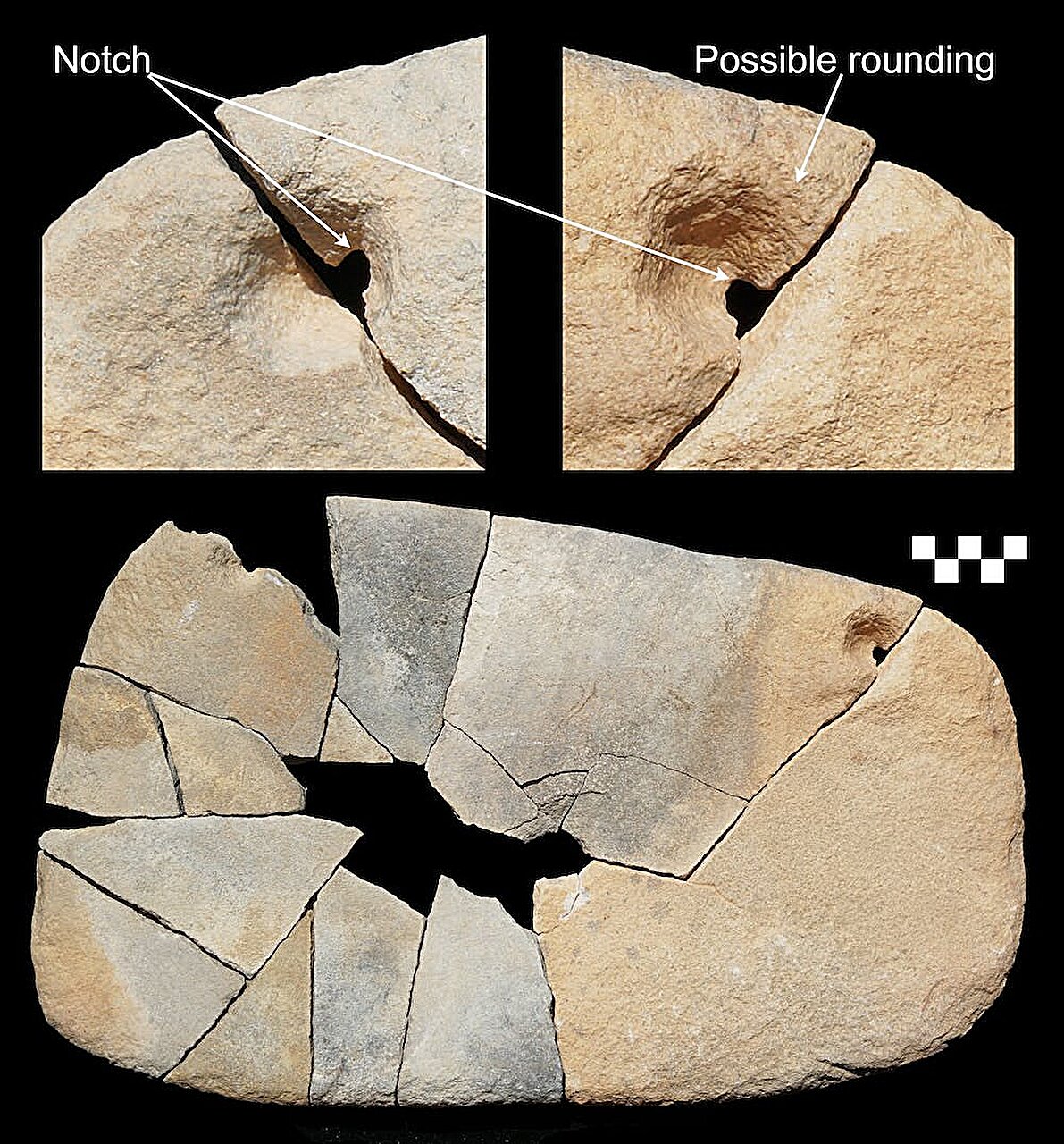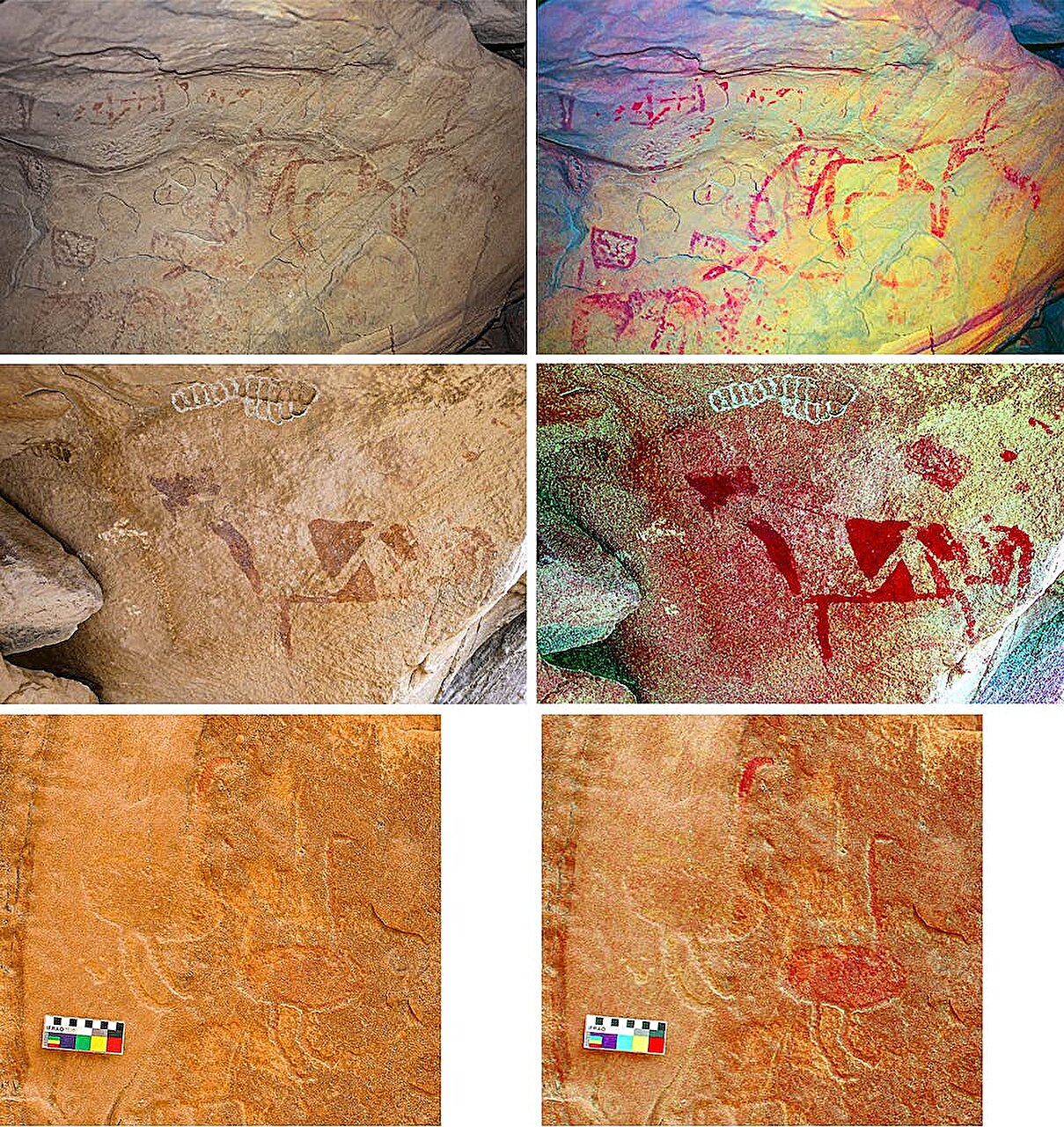Neolithic herders transported heavy stone tools over long distances
Categories: Nálezy nejenom s detektorem na blízkém východě
In what is now the Nefud Desert in Saudi Arabia, a site with hundreds of nomadic herders' hearths dating back to the early Stone Age has been discovered. A surprise for the archaeologists was the abundance of broken grinding stones found in the hearths, the microscopic analysis of which yielded a wealth of information.
10,000 to 6,000 years ago, much of Arabia was much wetter and greener than it is today. Pastureland was widespread and trees and shrubs grew near water sources. Lakes formed around which herders lived, leading their animals to graze. These people were also skilled artists. They created thousands of pictures in rocks, cliffs and boulders to document their daily lives. They depicted hunters, gazelles, wild donkeys and ibex, and also showed their most prized possession: their cattle.
Archaeological sites from this period consist of sets of small hearths. The herders seem to have been extremely mobile, moving with their herds across the landscape in search of better pastures and water. They had small camps around lakes, which they returned to repeatedly over the course of seasons and years. The authors of the study discovered one such camp a few years ago at Jebel Oraf, near the Jubbah oasis, in the Nefud desert in northern Saudi Arabia.
They discovered 170 small fires on the shores of a small ancient lake. Seventeen were examined, and radiocarbon analysis showed that most were between 7,200 and 6,800 years old. Interestingly, they were literally full of grinding tools. Most were broken into smaller pieces and then placed in the hearth. Some had holes drilled in them, presumably to hang them on a cord and make them easier to carry.
Although people migrated a lot, they took the heavy grinding stones, weighing up to three kilograms, with them. Perhaps they tied them to cattle for easier transport. Either way, it is clear that these grinding tools were very important to them. Today, the Jubbah oasis is extremely arid, and no organic remains remain. No plant remains have been found in archaeological situations, and animal bones have only survived in small fragments.
Experimental archaeology has helped to elucidate the microscopic traces left on the surface of grinding tools by the grinding of different materials such as bones, pigmented rocks or plants. These traces, including grooves, fractures, the rounding of individual quartz grains, and different types of polishing, can be seen under the microscope and the information obtained can be transferred to archaeological artefacts.
The microscopic study has shown that grinding stones were used for a variety of different purposes, from grinding plants to breaking up pigment to crushing bone. Fires were used to cook the meat of cattle, sheep and goats, and game. Herders probably broke animal bones to get at turkey, which has a high fat content. Unfortunately, no plant remains have survived, so it is unclear whether they were grinding wild plants for simple bread or whether they were crushing plant fibres to make baskets and ropes.
Both may have been important to their lifestyle. They moved frequently and bread was easy to store and carry. Baskets and ropes could be used for storage and transportation, also for building simple, portable shelters. Grinding tools were used to process red slate from the nearby mountains, which could be used as a crayon or ground into a red powder as a dye.
Analysis of the grinding traces also revealed that the tools were used for a variety of purposes and materials over time. They were clearly valuable and used as much as possible. Gradually, they were broken into smaller and smaller pieces. In some cases, archaeologists have pieced together as many as 12 fragments. But why the tools were eventually put in the fire is still not entirely certain - perhaps they were used for cooking or drying meat.
Grinding stones appear to have been an important tool for nomadic herders 7,000 years ago. They enabled Stone Age pastoralists to create food sources and plant materials that were vital to their mobile way of life.
Roman Nemec
Sources: phys.org, journals.plos.org

Grinding stone with holes for threading cordage

tools show microscopic traces of plant processing and pigments

the hearths contained a variety of different grinding stones

rock art in northern Arabia demonstrates the importance of pigment use

top right vesicular basalt with drilled hole, top left sandstone with drilled hole, bottom granite

a selection of grinding stones in various stages of preparation, with Jebel oraf in the background

hearth from orf2 and orf115

map showing the location of jebel oraf sites
The article is included in categories: